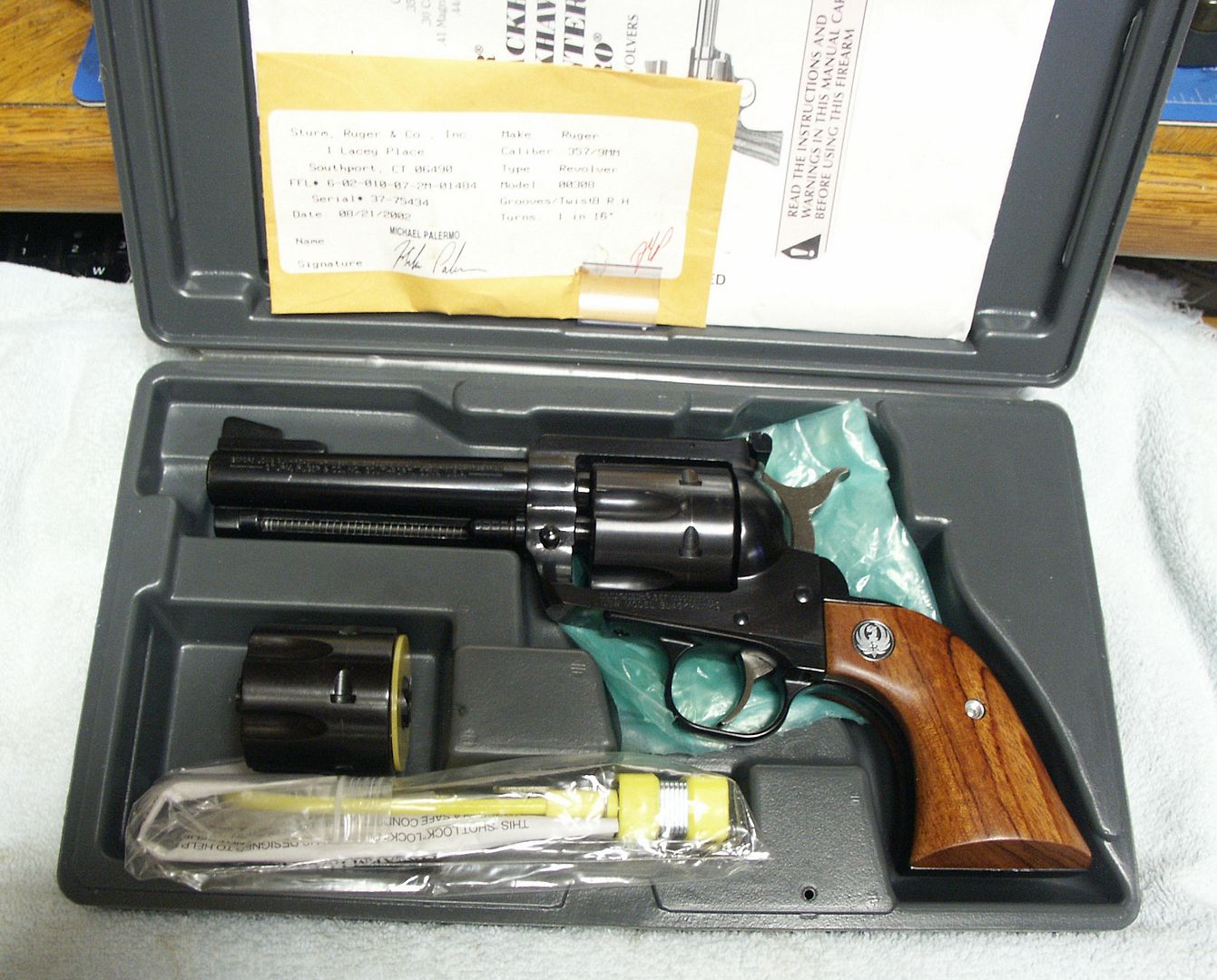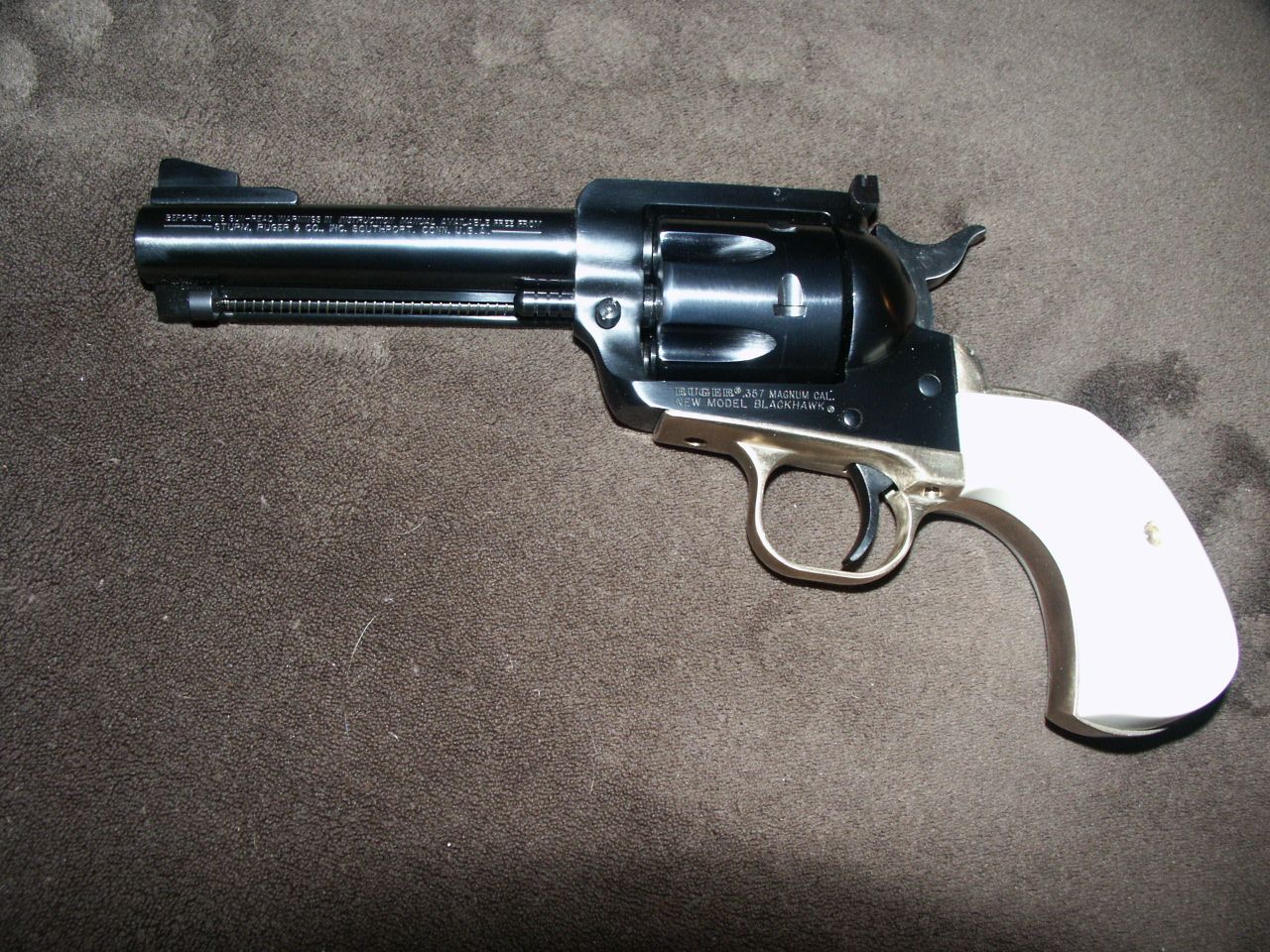The large-frame Blackhawks in 357 are made on the same class of frame as the 44Mag SuperBlackhawks, from 1973 on. These are insanely strong for a 357, and are great for those who are just learning to reload

. They'll tolerate more newbie errors than almost anything else. (For the record, only the 5,000 or so Ruger Redhawks in 357 and the Freedom Arms large-frame ('83 frame) in 357 are stronger, to my knowledge.)
As to accuracy:
The 357Mag Flattop Blackhawk 50th Anniversary gun that madcratebuilder owns is very accurate, because each of it's cylinder bores were reamed with the same bit/reamer set, in sequence. The first recent Ruger to get that treatment was the New Vaquero in 2004. The 50th 357 (first shipping in 2005) is an oddball among "Blackhawks" because it has the same mid-frame size as the NewVaq, and is similar in size and heft to a Colt SAA in 357. While it's not quite as strong as the large-frame series, the same cylinder is big enough to be reamed out to a 45LC or 45ACP, and function that way, so in 357 it's beefier in all directions than a GP100. So that gun and it's fixed-sight New Vaquero cousin are stronger than a GP100.
The large-frames from 1973 forward had their cylinders drilled out "all six at once" with six bit/reamer sets. These sometimes varied between chambers, harming accuracy. Ruger switched the large-frame SAs to the new single-reamer system (same as the mid-frames) in 2007. These "new type cylinder" variants can be IDed by the "lawyer's warning billboard" ("read the manual", etc.): the old system had the warning label on the side (or pre-dated the warning labels) while the new cylinders have the warning label UNDER the barrel.
(There's an exception: the large-frame Blackhawk Flattop 44Mag Anniversary gun NOT marked "Super" released in 2006 has a side-barrel warning but the new cylinder process. Good starting point for a custom if you want a 44Mag.)
Mid-frames have the improved cylinder no matter where the barrel warning is.
Large-frames with a second cylinder in 357/9mm or 45ACP/45LC convertable follow the same rules as to the cylinder making process.
OK. Now let's throw one more thing in there

.
From 2004-2007 were "golden years" for Ruger quality control in general. Ruger was on a friggin' roll and making really sweet guns. By late 2007 and into 2008, the "great Obama gun rush" started, plus Ruger introduced a lot of new models - the LCR, LCP, SR9 and more. Quality took a bit of a dive. By early 2010 it picked back up, and now it's very damned good - almost no trouble reports whatsoever.
SO! You want an accurate Ruger? Get one made from 2004-2006, or brand spankin' new recent production. Avoid an "Obama gun rush years" piece. Get one with the cylinder made the right way. Run "the checkout" on it no matter what (see stickied post, this forum).
I bought my Ruger SA in 2005. I wanted the new-type cylinder, and the 50th 357 was at the time rare and pricey. (They ended up making about 16,000 through 2007ish, so there's now plenty out there if you look.) I went with a New Vaquero in 357 and modded the hell out of it. It's my daily carry piece, no regrets, dead nuts accurate.


